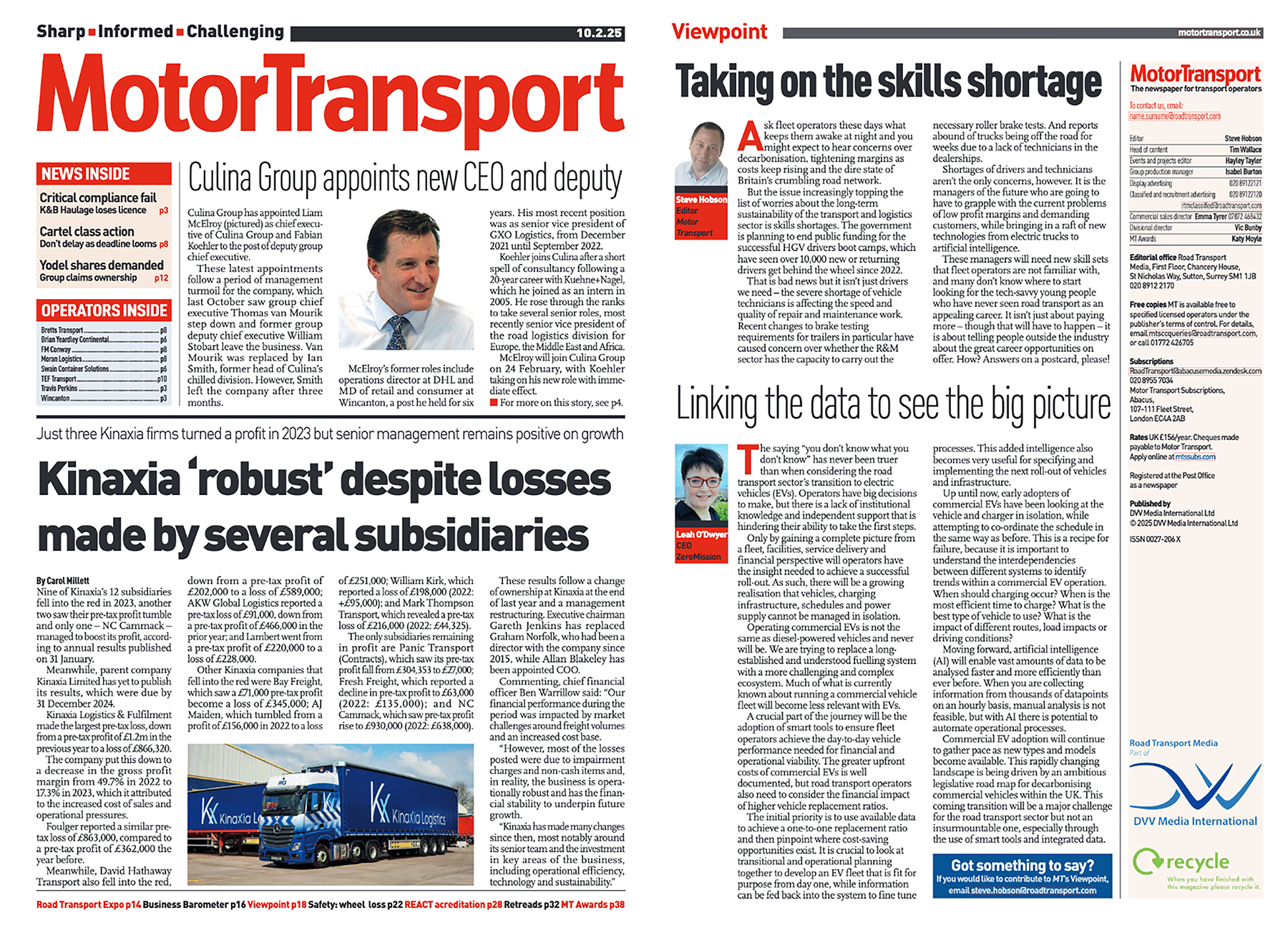CONNECTING THE DATA FOR A SUCCESSFUL EV TRANSITION
Leah O’Dwyer, CEO, ZeroMission
The saying “not knowing what you don’t know” has never been truer than when considering the road transport sector’s transition to commercial electric vehicles (EV). Operators have big decisions to make, but currently there is a lack of institutional knowledge and independent support that is hindering their ability to make the first steps into this unknown.
Only by gaining a complete picture from a fleet, facilities, service delivery and financial perspective will operators have the insight needed to achieve a successful roll-out and meet the required performance metrics. As such, there will be a growing realisation that vehicles, charging infrastructure, schedules, power supply cannot be managed independently in isolation. Everything has a consequence within a commercial EV operation, so its about connecting these different aspects of a fleet together to gain a degree of confidence that you can get the job done.
Operating commercial EVs is not the same as diesel-powered vehicles and never will be. The problem is that side by side, the vehicles look the same, perform the same type of duty but operationally are a very different proposition. We are trying to replace a universally established and understood fuelling system with a much more challenging and complex ecosystem. Much of what is currently known about running a commercial vehicle fleet will become less relevant with EVs or at least be superseded by other operational considerations. This means an alternative approach is needed to ensure that both the financial and environmental benefits of EVs are realised.
A crucial part of the journey will be the adoption of smart tools to ensure road transport operators achieve the day-to-day vehicle performance needed for financial and operational viability. Up until now, early adopters of commercial EVs have been looking at the vehicle and charger in isolation, while attempting to coordinate the schedule in the same way as before. This is a recipe for failure, because its important to understand the main parameters that contribute to the successful operation of an EV and how they influence each other.
Understanding the interdependencies between different systems will help to identify trends within a commercial EV operation. When charging should occur? When is the most efficient time to charge? What is the best type of vehicle to use? What is the impact of different routes, load impacts or driving conditions? This added intelligence also becomes very useful for specifying and implementing the next roll-out of vehicles and infrastructure, while the information can be fed back into the system to finetune processes and target continuous improvements.
Moving forward, AI will enable vast amounts of data to be analysed and acted upon faster and more efficiently than ever before. Vehicles, charging stations, schedules, supply equipment, maintenance systems all generate huge volumes of data, which can be interrogated and analysed to generate valuable insights.
Commercial electric vehicle (EV) adoption will continue to gather pace as new types and models – across vans and HGVs – become available. This rapidly changing landscape is being driven by an ambitious legislative roadmap for decarbonising commercial vehicles within the EU. This coming transition will be a major change for the road transport sector, but not insurmountable, especially through use of smart tools and integrated data.
Read more on the MotorTransports magazine here
ENDS


